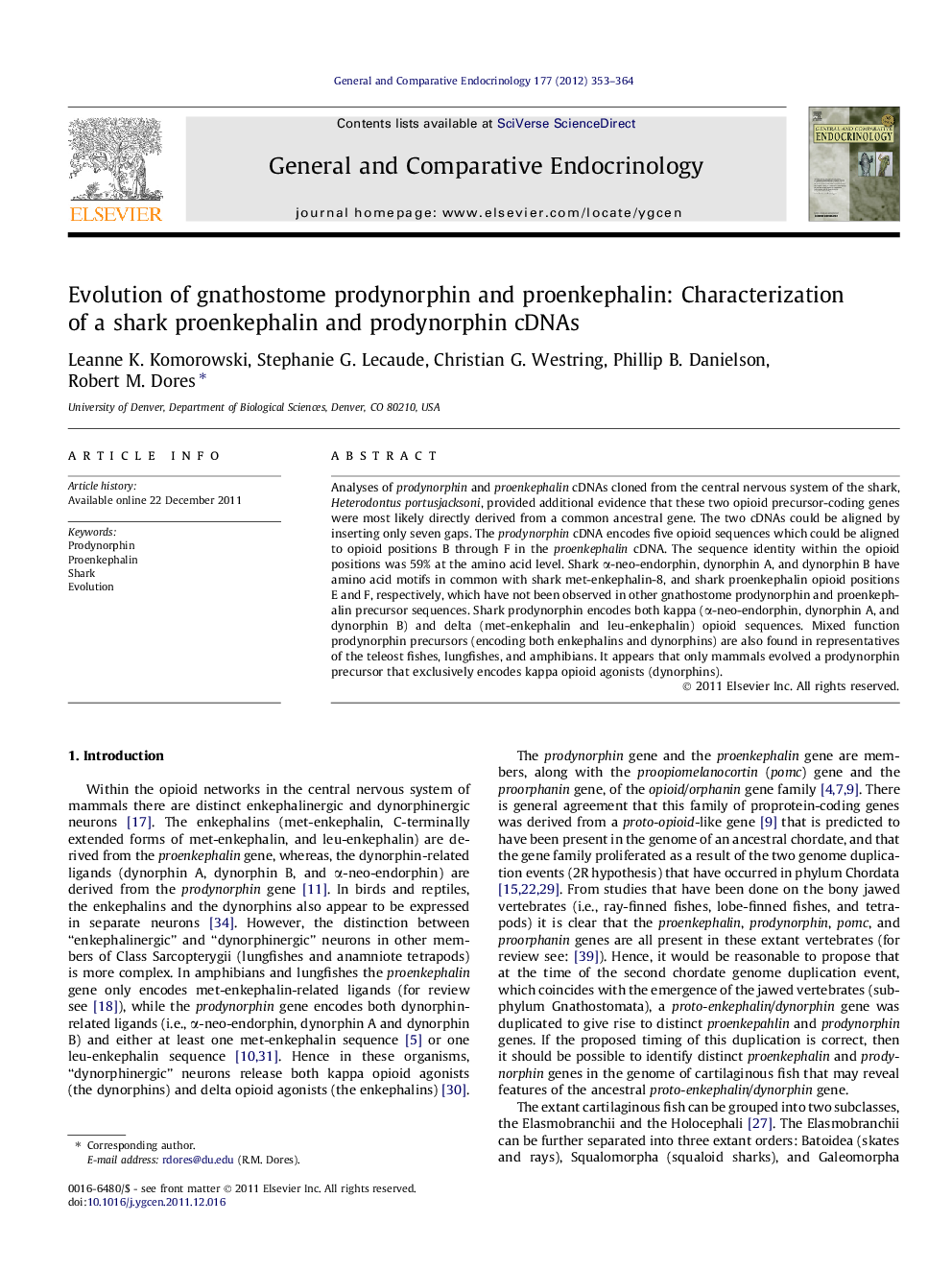| Article ID | Journal | Published Year | Pages | File Type |
|---|---|---|---|---|
| 2800631 | General and Comparative Endocrinology | 2012 | 12 Pages |
Analyses of prodynorphin and proenkephalin cDNAs cloned from the central nervous system of the shark, Heterodontus portusjacksoni, provided additional evidence that these two opioid precursor-coding genes were most likely directly derived from a common ancestral gene. The two cDNAs could be aligned by inserting only seven gaps. The prodynorphin cDNA encodes five opioid sequences which could be aligned to opioid positions B through F in the proenkephalin cDNA. The sequence identity within the opioid positions was 59% at the amino acid level. Shark α-neo-endorphin, dynorphin A, and dynorphin B have amino acid motifs in common with shark met-enkephalin-8, and shark proenkephalin opioid positions E and F, respectively, which have not been observed in other gnathostome prodynorphin and proenkephalin precursor sequences. Shark prodynorphin encodes both kappa (α-neo-endorphin, dynorphin A, and dynorphin B) and delta (met-enkephalin and leu-enkephalin) opioid sequences. Mixed function prodynorphin precursors (encoding both enkephalins and dynorphins) are also found in representatives of the teleost fishes, lungfishes, and amphibians. It appears that only mammals evolved a prodynorphin precursor that exclusively encodes kappa opioid agonists (dynorphins).
Graphical abstractFigure optionsDownload full-size imageDownload as PowerPoint slideHighlights► Shark proenkephalin encoded seven met-enkephalin-related opioid sequences. ► Shark prodynorphin encodes both enkephalin and dynorphin end-products. ► Proenkephalin and prodynorphin were most likely directly derived from a common ancestral gene.
